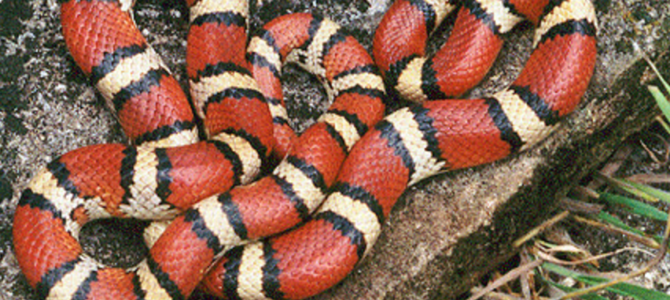It could be said that there are two types of people in the world: those who love snakes and those who seriously dislike them. Yet, no matter which of those groups you fall into, you probably don’t like the idea of running into a random snake in the wild that you can’t identify. On one hand, it could be completely harmless. On the other hand, it could be extremely deadly.
A big part of overcoming a fear or dislike of snakes is to understand more about them. The more you know, the less mysterious and dangerous they seem. One of the first steps towards understanding them is learning how to identify snakes.
There are quite a few different breeds of snake spread throughout the world. Learning how to identify each and every snake would take more than a lifetime. However, you can learn to identify some of the major families, such as certain vipers, as well as some of the most common snakes you might see in a residential area.
Identifying a snake is not necessarily about determining whether a snake you encounter is poisonous or non-poisonous based on certain characteristics. There aren’t many characteristics that will give away this detail. Instead, you learn to identify the particular snake itself based on body shape and possibly color. Then, perhaps, you can identify if that type of snake is or is not poisonous.
There are a few steps to keep in mind when learning how to identify snakes. They are rather basic, but they will help you get a better grasp on identifying a particular snake. This is similar to the system that many experts use.
1. Identify Body Length.
A snake can be classified into one of three body length categories. These categories are large, medium, and small. In addition to the length of the body, the width should be considered as well. This system works best if actual measurements are obtained, but of course, you should never attempt to measure a snake you find in the wild if you are not trained to do so.
2. Identify Head Shape.
Next is the shape of the head. This can be difficult to identify because some snakes may alter their head shape when in an aggressive state. If you can examine the snake from a distance and are certain it is not acting aggressively, then you will get better results. Vipers are known for their flat, triangular head shape. Other classifications include oval, round, and long.
3. Identify Eye Characteristics.
Finally, try to identify characteristics about the eyes. This includes the shape of the pupil, the color of the eye, the size of the eye, and its shape on the face. The more information you can record on the subject, the better.
Record And Research.
It’s a good idea to keep a book that contains the many different snake families on hand. You can then record the details above in a notebook and use the information to identify the snake. Of course, in this day and age, you could also use your smartphone if you are in a location with a signal.
